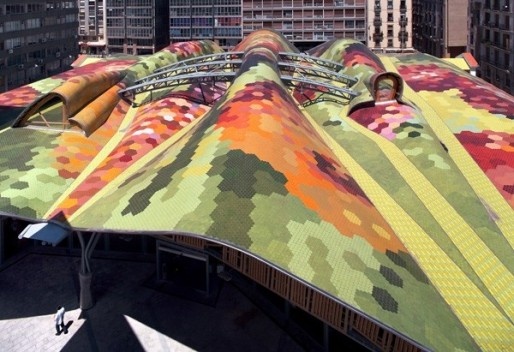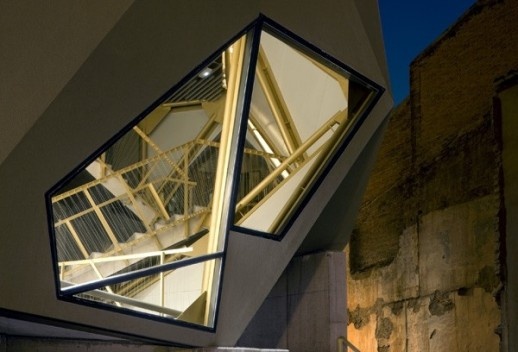
Mercat Santa Caterina, Barcelona, España. EMBT Enric Miralles Benedetta Tagliabue, 1997-2005
Flavio Coddou: But when you moved to Barcelona did you start working as a photographer?
Duccio Malagamba: When I graduated in December ‘86, I had to enter military service, but I got a medical dismissal. In Italy there were no job perspectives in sight and so, I thought, that year would be a great chance for me to see the world. I took the advantage of the friendships I made in Siena years before, while attending a summer school, directed by Giancarlo de Carlo, which brought students from many European countries and even from the U.S to Italy.
I started from Barcelona – in Siena I met Enric Miralles – with a perfect timing because I arrived right after the city had been announced host of the Olympic Games. Thanks to that there was a lot of work and a cosmopolitan atmosphere, the offices did not have enough staff to process all the projects, and foreign architects were welcome.
After working for two small architectural offices, I found a position in the office MBM Martorell-Bohigas-Mackay. I stayed there a few years working as an architect while photography fell into oblivion. Being Italian, together with another compatriot, I had to prepare a project for a major international contest in Siena, to which prominent architects like Siza, Gregotti, Ungers and Eisenman were invited. Despite having such competitors, we passed first selection and finally won the contest. Moreover, in 1991 there was a sharp downturn in activity and there was not much work in the studio: the few new projects were entrusted to other more experienced architects while I was still waiting for that Siena project to start...
So I applied for a research fellowship at CNR (Italian National Research Council). I was approved and chose contemporary Spanish architecture as a topic of my research. I was supposed to travel around Spain and take photographs of projects I visited. At that time things worked much slower than today, so I had time to become friends with the architects I got acquainted with along the way. I started to show the photographs I took and noticed certain interest in my work. Antonio Cruz and Antonio Ortiz in Sevilla, and Enric Miralles in Barcelona, began to assign me some photo reportages. Therefore, while I was still waiting for some work in architecture to turn up (it didn’t happen since the Siena project never made headway), I got back to my photo camera.
I started to enjoy architectural photography, now with more insight of the subject. Originally, during my travels I took pictures of cities, houses and monuments but more from an aesthetic or social point of view. After my career and my experience as an architect, photography turned into a way to explore buildings with measure and depth. A true instrument of study, investigation and even criticism…

Reforma Parcial del Ayuntamiento de Manresa, Barcelona, España. Bailo+Rull ADD Arquitectura, 2005-2008



